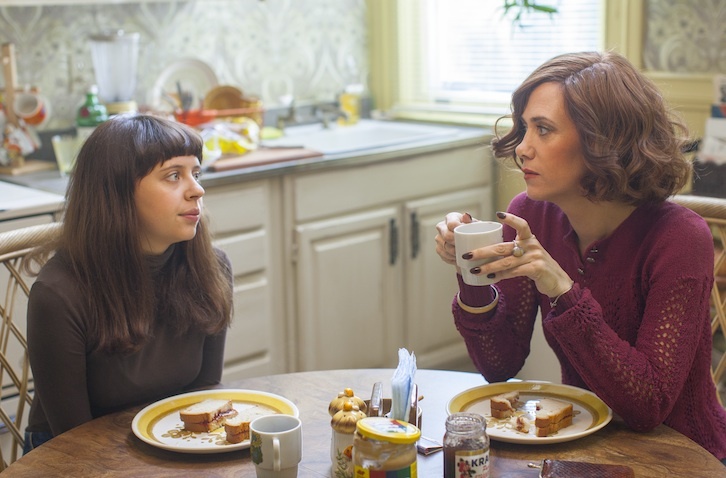Caitlyn Jenner is Queen. Rape survivor Emma Sulkowicz fought the system by carrying her mattress around campus. And photographer Petra Collins leads a girl gang that produces body-positive art, underwear and books. It’s easy to see why 2014 was celebrated (and lamented) as “the year feminism went viral.” So why is Hollywood — arguably the epicenter of liberal politics — still rife with gender inequality? Two recent studies have pointed out the extreme lack of female speaking roles in film. These irrefutable stats make it glaringly obvious that badass female characters like Katniss Everdeen and Furiosa, and supernovas like Meryl Streep (appearing in her 51st film this summer), are exceptions to the rule.
In 2014, a study conducted by Dr. Martha Lauzen, executive director of San Diego State’s Center for the Study of Women in Television and Film, revealed that females accounted for only 12% of all the protagonists in the top 100 domestic box office hits released last year. They also made up just 29% of the major characters and 30% of all speaking roles, marking a noticeable drop since 2002. And the latest research from the Media, Diversity & Social Change Initiative at the University of Southern California shows that from 2007 through 2014, only 30.2 percent of all speaking or named characters in the 700 top-grossing fictional films released in the United States were women. Findings also show that (surprise!) the movies are blindingly white and disproportionately hetero. Basically NOT AT ALL reflective of reality or the direction which society (and television) is moving.
While the latest numbers inspire us to spring into action (and kick a misogynistic studio head in the balls, while we’re at it), the truth is that the underrepresentation of women on the big screen isn’t a new phenomenon. In response to the New York Times article describing the study, media critic Lili Loofbourow tweeted, “Won’t go to movies unless the protagonist is female. have been doing this for 5 years. have saved SO MUCH MONEY.”
In 2014, Cate Blanchett accepted her Oscar for Best Actress in Woody Allen’s Blue Jasmine with a speech that blasted Hollywood’s sexist practices. “To those in the industry who are still foolishly clinging to the idea that female films, with women at the center, are niche experiences: they are not. Audiences want to see them, and, in fact, they earn money. The world is round, people,” she proclaimed to much fanfare.
Later, Interstellar‘s Jessica Chastain told Vulture, “I think there is a huge problem in American cinema where stories about women aren’t nurtured and celebrated and brought to the screen as often as stories about men.” But, she notes that with the success of female-fronted films such as Lucy starring Scarlett Johansson, which brought in $44 million during its opening weekend (beating out Dwayne Johnson in Hercules for top spot at the box office), the momentum is building. “I do feel like times are changing, because money means everything,” she adds.
As alarming as the scarcity of females on screen is their invisibility behind the scenes. According to USC’s report, of the 1,326 content creators in 2014, only 2 directors, 33 writers, and 175 producers were women. Taking note, this past May the ACLU sent letters to the federal government calling for an investigation into “the systemic failure to hire women directors at all levels of the film and television industry.” In response, director Kathryn Bigelow (Zero Dark Thirty, Hurt Locker), one of the few female filmmakers to barrel through the celluloid ceiling, declared, “Gender discrimination stigmatizes our entire industry. Change is essential. Gender neutral hiring is essential.”
If that’s not a clear sign of deeply embedded sexism, then surely the popular Tumblr Shit People Say To Women Directors (& Other Women In Film) is. What began as a safe place for women in film to exchange industry horror stories has turned into a valuable resource for awareness and progress. From vile tales of sexual harassment (one male director brought a secret camera to illegally film a nude scene with an actress, says assistant director Michelle Millette) to accounts of condescending language (“You should marry a rich guy and make movies for fun with his money,” a male colleague reportedly told an aspiring female director), the blog calls out the ubiquitous and repulsive discrimination women regularly face in the workplace.
Despite Hollywood’s inhospitable environment, there are some heartening examples of late. Trainwreck, written by and starring feminist comedian Amy Schumer, raked in a very bountiful $30.2 million its opening weekend, and is braced to be the new Bridesmaids (perhaps the funniest and highest grossing female-centric comedy in recent years). And The Diary of a Teenage Girl starring Kristen Wiig and Bel Powley, and directed by Marielle Heller (whose next film is about the life of Supreme Court Justice Ruth Bader Ginsburg) is receiving praise for its authentic handling of tumescent protagonist Minnie Goetz’s lusty coming of age story.
To quote Louise Sawyer from epic female outlaw drama Thelma & Louise, “You get what you settle for.” And if the recent uprising is any indication of what we can expect, settling is the last thing on any female actress or filmmaker’s agenda. In the words of SPSTWD’s founders, “If you want to become a director, but these stories are scaring you, become a director anyway. Ignore the bullshit and keep working. And start hiring women whenever possible.” It’s a battle cry and a mantra that can be applied by all women, across all professions. And since we’re already quoting our favorite women-fronted flicks, let’s part ways with a little First Wives Club: “Don’t get mad, get everything!”
Credits
Text Jane Helpern
Still from The Diary of a Teenage Girl
